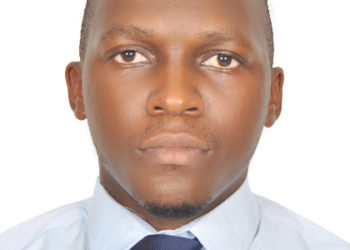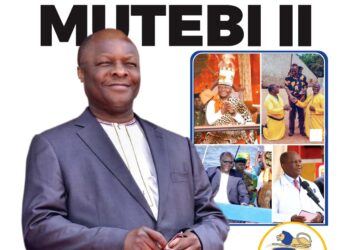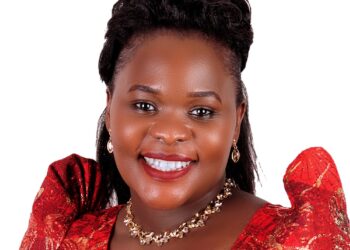By Ofwono Opondo
Last week, the Uganda media, collectively fell for a fabricated story on the purported electoral reform bills, they claimed government had presented to parliament, and basing on falsehoods, generated a frenzied debate laced with toxic language and insults. It appears, the media was fed by a mendacious opposition now on ropes, hoping to derail debate, like they did, during Constitutional amendment in 2017. Among other falsehoods was that government proposed to ban phones and cameras at polling stations, give security personnel early voting, and bar independents from forming alliances with parties. Their objectives is to portray government as insincere and hostile to genuine electoral reforms, create public disaffection, and pin down NRM in an extended dog fight until the 2021, with hopes of denting its electability.
Due to political bias, obvious negligence to facts, and unprofessionalism, the journalists and media houses, simply swallowed bold lies, and should carry their own cross. Sadly, no journalist had actually read the five bills presented to parliament by Attorney General, William Byaruhanga, taking refuge in the fact copies were not immediately circulated. Though inadvertent, it was good, the media was left to run full circle, so that by Tuesday when Byaruhanga exposed their mischief, they couldn’t retreat without shame. And for this failure, the media collectively earn frowns, and Byaruhanga takes a bouquet.
Their subsequent reporting after Byaruhanga’s clarification, remained slanted, one headline screamed, ”Government disowns controversial poll proposals.” Another, paper simply buried the story deep inside, under “Government claries on election reform proposals,” and falsely claimed, that Byaruhanga didn’t adequately ‘answer’ questions on the presidential election elections reform.
Since the advent of vibrant democracy, liberalization, and now social media, it appears that dirty politics of duplicity is leading Uganda towards the end of professional journalism as we knew it years back. Sadly, in an effort to compete on the information super highway, editors at the traditional and mainstream media of print, radio and television are paying little attention to detail and throwing gate-keeping matters to the wild winds. It is embarrassing that when easy access to smart mobile technology is increasing, expanding and should facilitate journalism, the Uganda media, is instead, steadily declining into the professional abyss.
This phenomenon has recently been so evident, that one needs to be a statistician to keep the count. Also, while democracy and liberalization should be enhancing informed public discourse, instead, many Ugandans, especially on media platforms have descended into gutter politics of hate, malice and false accusations. If this falsehood had been created and spread by the NRM, certainly noise and insults would be deafening from the critics, but they have simply kept quiet as if it is normal to fabricate. But as the adage goes, lies may run fast, but truth will eventually triumph. Now Ugandans will debate the actual proposals, their merits and demerits.
An independent, free, and objective media should reflect a balanced and fair public opinion and criticism of government policies, and the conduct of its officials to increase public accountability. Unfortunately, sections of the Uganda media, appears to be institutional opponents to the government, which erodes their credibility. Nevertheless, with hindsight to insurgencies that lingered beyond their own capabilities, sometimes, even a biased media, may play an important role, especially when formal intelligence institutions fail to perform effective due diligence.
I recall controversies over human rights abuses in northern Uganda and Teso, between 1987 and 1992, when the army conducted operations against rebels, and commanders denied that abuses existed, including deaths of 69 people in a train wagon at Mukura, July 12, 1989 (Kumi), Bur Coro, Aswa county (Gulu), 18 deaths in Tabur and eight in Dakabela (Soroti). President Museveni had to rebuke some commanders saying they were “perhaps” no different from Bazilio Okello! It’s important for government should to pay attention to public criticisms even when appears malicious.
The older generation will remember tabloids like Munnansi, Citizen, Telecast, and one Francis Odida whose now defunct Sunday Review in 1987 run a fictitious interview with rebel leader Alice Lakwena, when he hadn’t even met her. These were often made worse by the colourful stories filed to the BBC.
In the 1990s there was an ‘independent’ daily that ran two brazenly fictitious stories, one a photograph of a woman, who it allegedly, had her pubic hair shaved in public view by UPDF soldiers at the 4th Division headquarters Gulu. Another false story was that a UPDF helicopter Gunship had been shot down in Kitgum by the LRA rebels. Graphic and alarmist, both were proved to be fabricated and planted to discredit the UPDF.
These days, the Uganda media seem embolden to manipulate, or even create own ‘facts’, and ‘figures’ to sensationalise stories to beat competition as was during Idi Amin and Milton Obote II, when anything passed for factual truth. Yet evidently, since 1986, the NRM has triumphed over many of these false narratives by opponents hitherto believed to be smarter, genuine and stronger. The media and opposition have been down that path before, and will surely collapse with it.
Do you have a story in your community or an opinion to share with us: Email us at editorial@watchdoguganda.com











